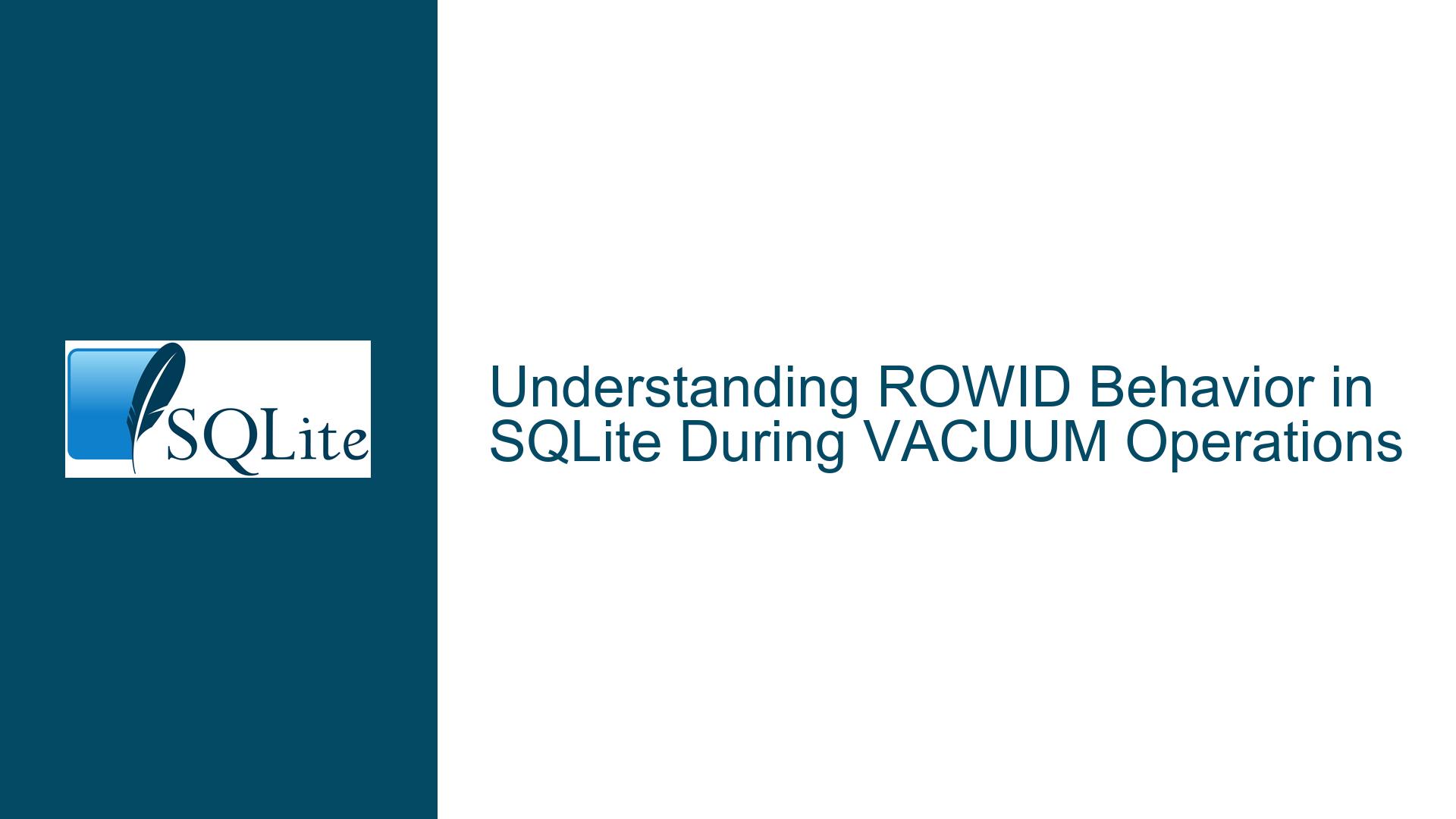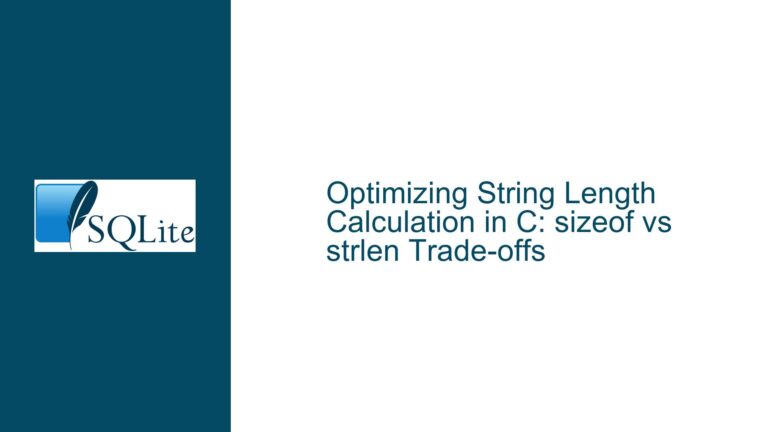ROWID Behavior in SQLite During VACUUM Operations
ROWID Stability and VACUUM Operations in SQLite
The behavior of ROWID in SQLite, particularly during VACUUM operations, is a nuanced topic that can lead to unexpected results if not thoroughly understood. The ROWID is a unique identifier for each row in a SQLite table, and its stability is crucial for applications that rely on consistent row identification. However, the stability of ROWID can be influenced by several factors, including the presence of an INTEGER PRIMARY KEY and the execution of VACUUM operations. This post delves into the intricacies of ROWID behavior, exploring why it might change during VACUUM operations, the conditions under which this occurs, and how to ensure ROWID stability in your SQLite databases.
The Impact of VACUUM on ROWID Without an INTEGER PRIMARY KEY
When a table in SQLite does not have an INTEGER PRIMARY KEY, the ROWID for each row is automatically assigned by SQLite. This ROWID is typically stable under normal operations, but certain actions, such as running the VACUUM command, can lead to changes in the ROWID values. The VACUUM command is used to rebuild the database file, which can result in the reordering of rows and, consequently, the reassignment of ROWIDs. This behavior is particularly pronounced in tables that lack an index.
The reason for this behavior lies in how SQLite manages storage and optimizes performance. Without an index, SQLite has more flexibility in reorganizing the physical storage of rows during a VACUUM operation. This reorganization can lead to the reassignment of ROWIDs as SQLite seeks to optimize the storage layout. However, when an index is present, SQLite is more constrained in how it can reorganize the rows, which often results in the preservation of ROWID values.
It is important to note that this behavior is not guaranteed and can vary between different versions of SQLite or even between different invocations of the VACUUM command. The SQLite documentation explicitly states that ROWIDs may change if the table does not use an INTEGER PRIMARY KEY, and this is a critical consideration for database designers and developers.
Ensuring ROWID Stability Through Proper Schema Design
To ensure the stability of ROWIDs in SQLite, it is essential to design your database schema with this consideration in mind. The most straightforward approach is to define an INTEGER PRIMARY KEY for your tables. When a column is designated as an INTEGER PRIMARY KEY, it automatically becomes an alias for the ROWID, and SQLite guarantees that the values in this column will remain stable across VACUUM operations and other database reorganizations.
In addition to using an INTEGER PRIMARY KEY, you can also consider the use of explicit indexes on your tables. While indexes do not guarantee ROWID stability, they can influence how SQLite reorganizes data during a VACUUM operation, potentially reducing the likelihood of ROWID changes. However, relying on indexes alone is not a foolproof method, and the use of an INTEGER PRIMARY KEY remains the most reliable approach.
Another consideration is the frequency and necessity of running VACUUM operations. While VACUUM can help optimize database performance and reduce file size, it is not always necessary to run it frequently. Understanding the specific needs of your application and the impact of VACUUM on your database can help you make informed decisions about when and how often to perform this operation.
Troubleshooting ROWID Changes and Implementing Best Practices
If you encounter issues with ROWID changes in your SQLite database, there are several steps you can take to troubleshoot and address the problem. First, review your schema design to ensure that you are using an INTEGER PRIMARY KEY where appropriate. This simple step can prevent many issues related to ROWID stability.
Next, consider the impact of VACUUM operations on your database. If you find that ROWID changes are causing problems, you may want to limit the use of VACUUM or implement additional safeguards, such as backing up your database before running VACUUM. This can help you recover from any unintended changes that occur during the operation.
Additionally, it is important to stay informed about the behavior of the specific version of SQLite you are using. As noted in the SQLite documentation, the behavior of ROWID during VACUUM operations can vary between versions, and staying up-to-date with the latest releases and documentation can help you avoid unexpected issues.
Finally, consider the broader context of your application and how it interacts with the database. If your application relies heavily on ROWID for row identification, you may want to implement additional logic to handle potential changes. This could include using alternative unique identifiers or implementing mechanisms to detect and respond to ROWID changes.
In conclusion, understanding the behavior of ROWID in SQLite, particularly during VACUUM operations, is crucial for maintaining a stable and reliable database. By designing your schema with ROWID stability in mind, carefully managing VACUUM operations, and staying informed about SQLite’s behavior, you can minimize the risk of ROWID changes and ensure the integrity of your database.






